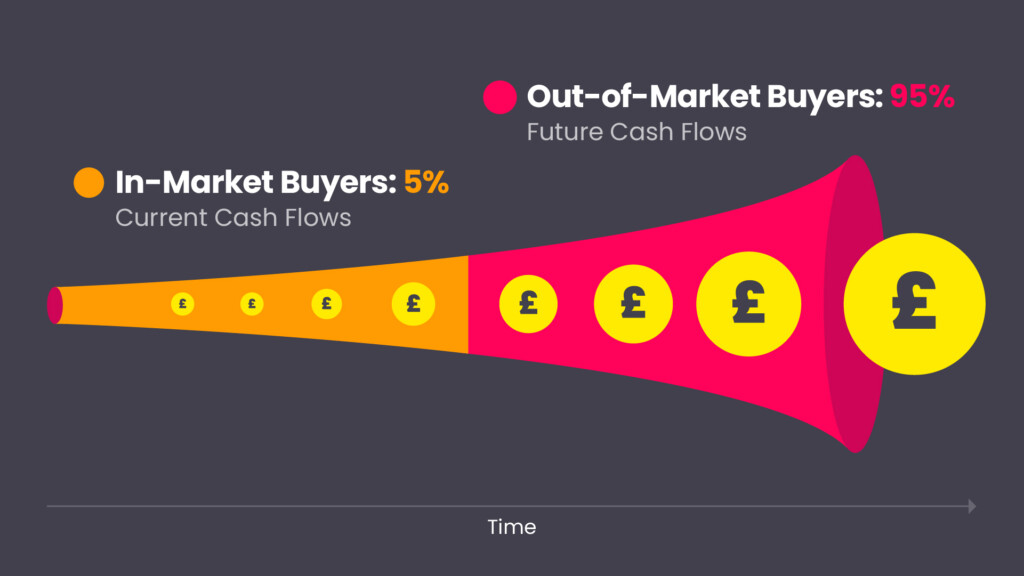Harmonising brand and user experience

Senior marketers understand that brand experience and user experience are inseparable and complementary. They should work together at every touchpoint to enhance the customer-journey.
Problems sometimes arise when teams that should be working towards a common goal focus too singularly on their own objective. The classic example is the age-old internal tension between sales, marketing and brand teams. For example, if we consider something as seemingly simple as adding a video to a website homepage, it’s clear to see how these tensions can get out of hand.
The brand manager wants their expensive video to take centre stage. The UX Manager feels it hinders users accessing critical information, and the Sales Director is tearing their hair out because they’ve got a warehouse full of products they desperately want to discount, and don’t understand why anything else should matter!
To rationalise these tensions, it’s useful to consider the 95:5 Rule. It relates to research indicating that at any given moment, 95% of potential customers are always ‘out of market’ and not ready to make a purchase. They simply don’t have an active need for your product or service right now.
Eventually, they’ll transition to the 5% that are in-market’, but this can take a very long time. There’s also the question of your brand’s visibility. Will it be on their mind while they research their purchasing options? To ensure that your brand will be well placed for consideration, we need to connect with them on a regular basis during the 95% phase, and build brand equity.

But it’s not enough to simply get your brand in front of the 95%. Brand, in the form of (for instance) PPC, display ads and social media assets can attract potential customers and generate traffic to your digital platforms, but what next once they arrive?
This is where it’s vital for brand and user experience to be harmonised. Working in unison, it’s possible to deliver content and interactions that form an emotional connection. Together, brand and UX can deliver a customer experience that leaves a positive, lasting impression.
So, how to go about achieving harmony? How do we overcome tensions between sales, marketing and brand teams? In our view, the path to harmony lies in the power and value of creative thinking. And not just for assets like imagery and copywriting, but all areas of the customer experience. We need to apply creative thinking across the board – such as with media planning, the technology stack, and how we gather audience insights.
Research by the LinkedIn B2B Marketing Institute suggests that ‘powerful creative can be 10 to 20 x more effective than mediocre creative’, and that ‘strong creative is linked to extending a brand’s share of voice’.
The problem is, many organisations struggle to understand creativity in tangible value terms. LinkedIn research suggests that compared to B2C creative, ‘B2B marketing is 150 x more likely to be seen as being creatively mediocre’. That’s not a great starting point when trying to connect with the 95% of potential customers who are out of market.
We also need to consider that compared to B2C, buying cycles are a lot longer. The 95:5 rule means it can be hard to sustain a brand campaign when there is no immediate uplift in results and conversions. For instance, there may be pressure from the sales team to switch budget away from a long term brand awareness campaign (targeting the 95%) to a short term tactical campaign – such as lead generation or discounting – in the hope of attracting the 5% in-market.
We also need to remember that with potential customers, there are many people that need to be influenced within an organisation, compared to just the single consumer in B2C. How your brand is perceived will vary, depending on where and how relationships are nurtured. It can be a struggle to get a consistent brand message across if it’s let down by a negative user experience.
“If you are unwilling to disrupt your business, there will always be someone willing to do it for you.”
Dr. Mauro Gilli, Political scientist
And it can be even harder for organisations that are not digital-native – those traditional brands built on analogue values. Their processes are embedded in their culture and can be difficult to transition away from. Some brands have implemented digital transformation, but are often still beholden to big legacy systems. This can make harmonising brand and user experience much harder. Salvation lies perhaps in taking small incremental steps that collectively, make a real difference.
To achieve harmony, the first thing we need to think about is the cultural impact we need to have on a brand. This is where the internal brand and EX (employer experience) comes into the mix. Then, it’s about looking at where the brand sits with our audience in the world today, and understanding their user experience – both good and bad. All stakeholders within the organisation need to come together and think creatively about how to retain the brand’s essence, but reshape it for today’s digital marketplace.
Next Steps
Want to learn more? Let’s have a conversation. We’re ready to help.



